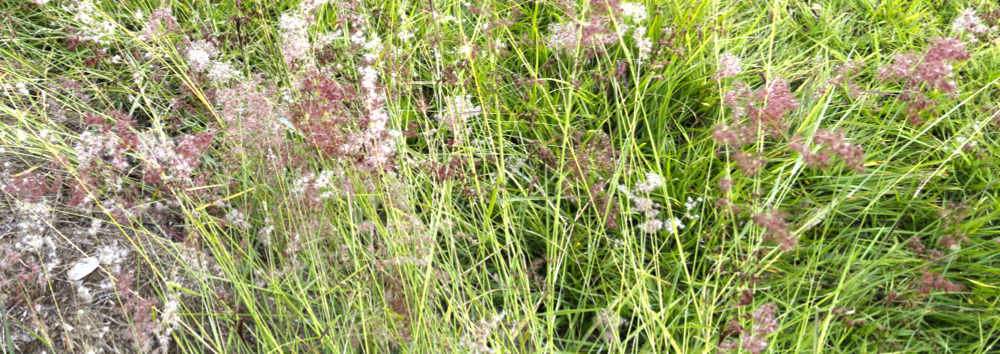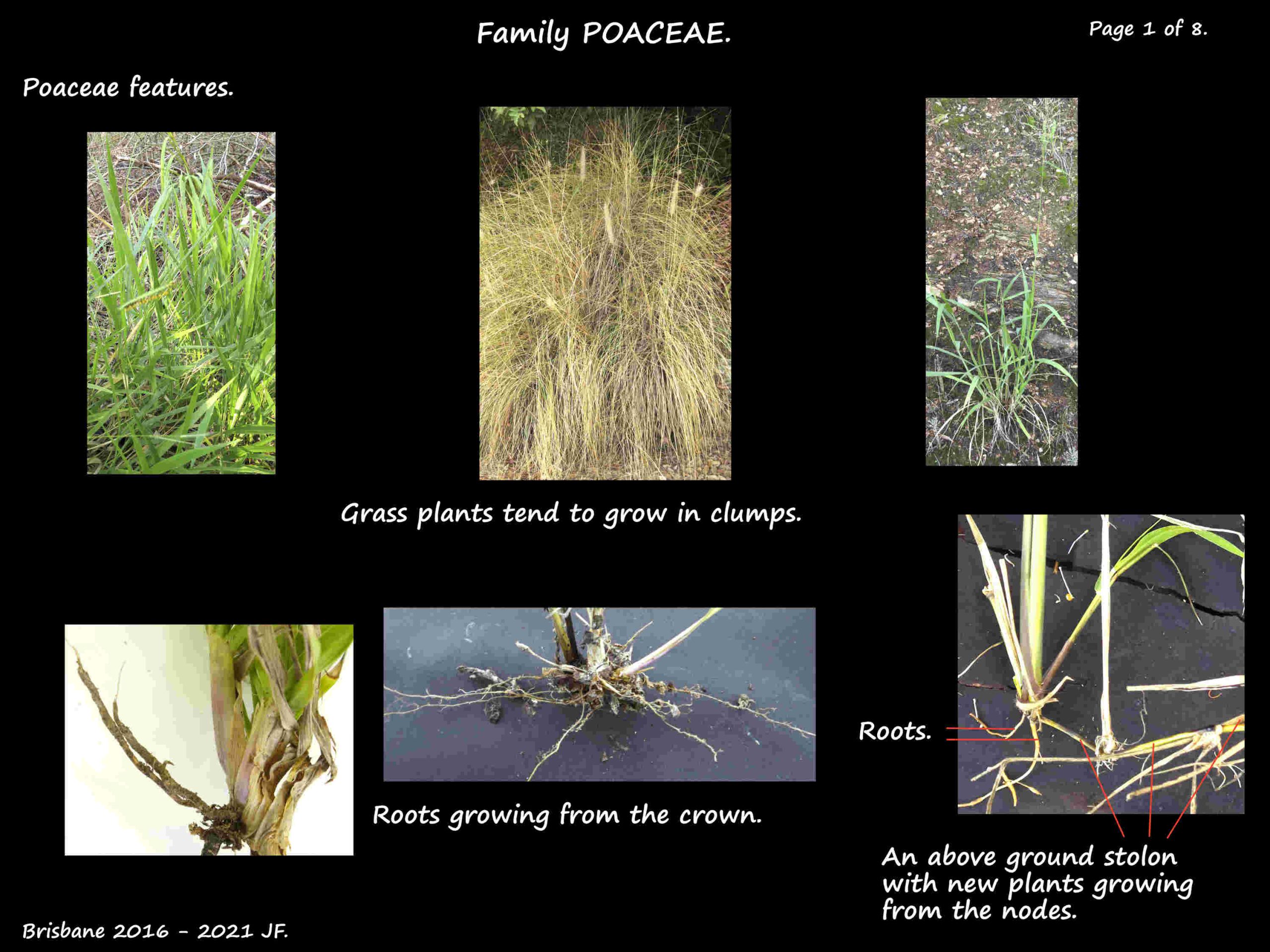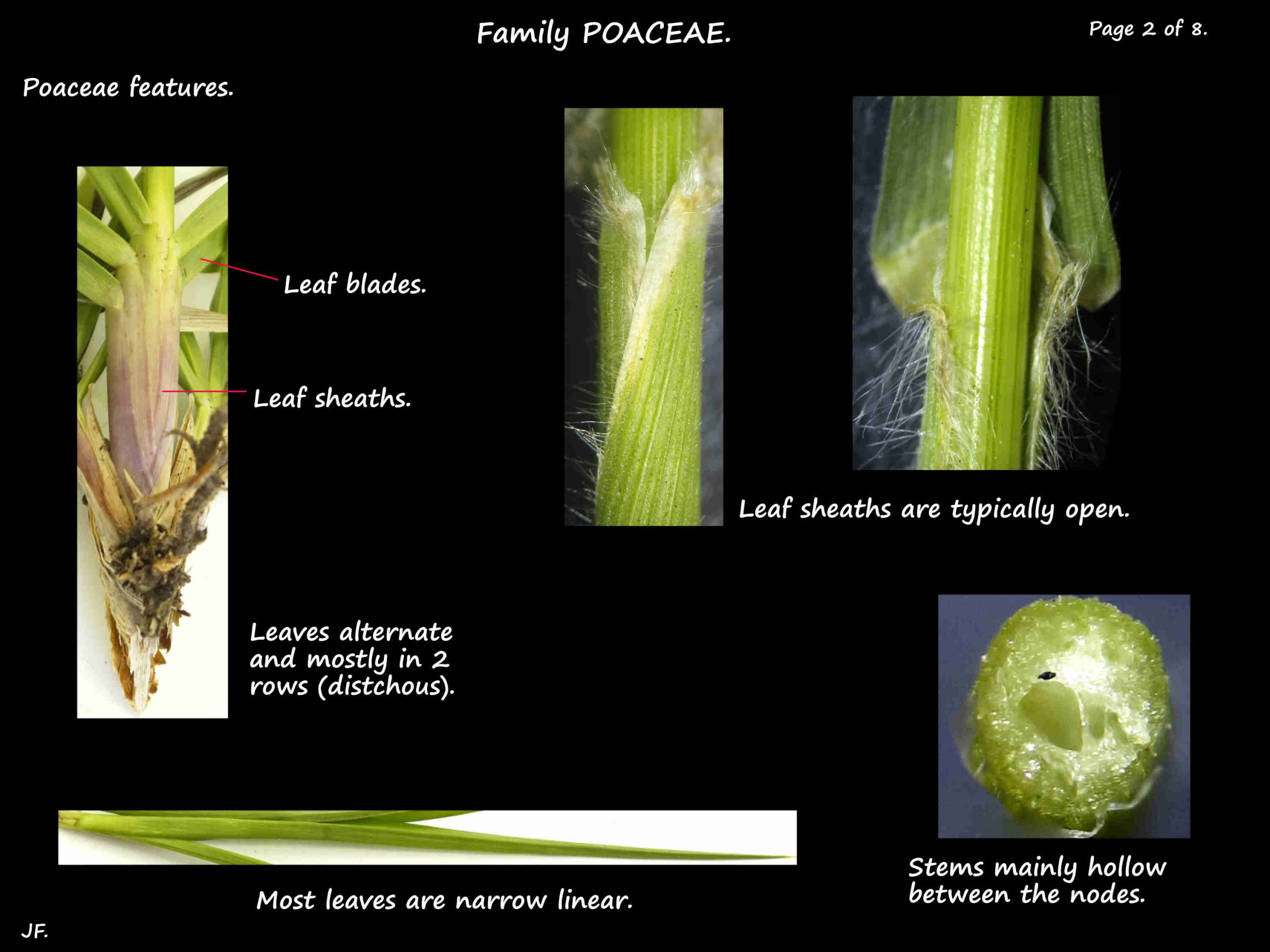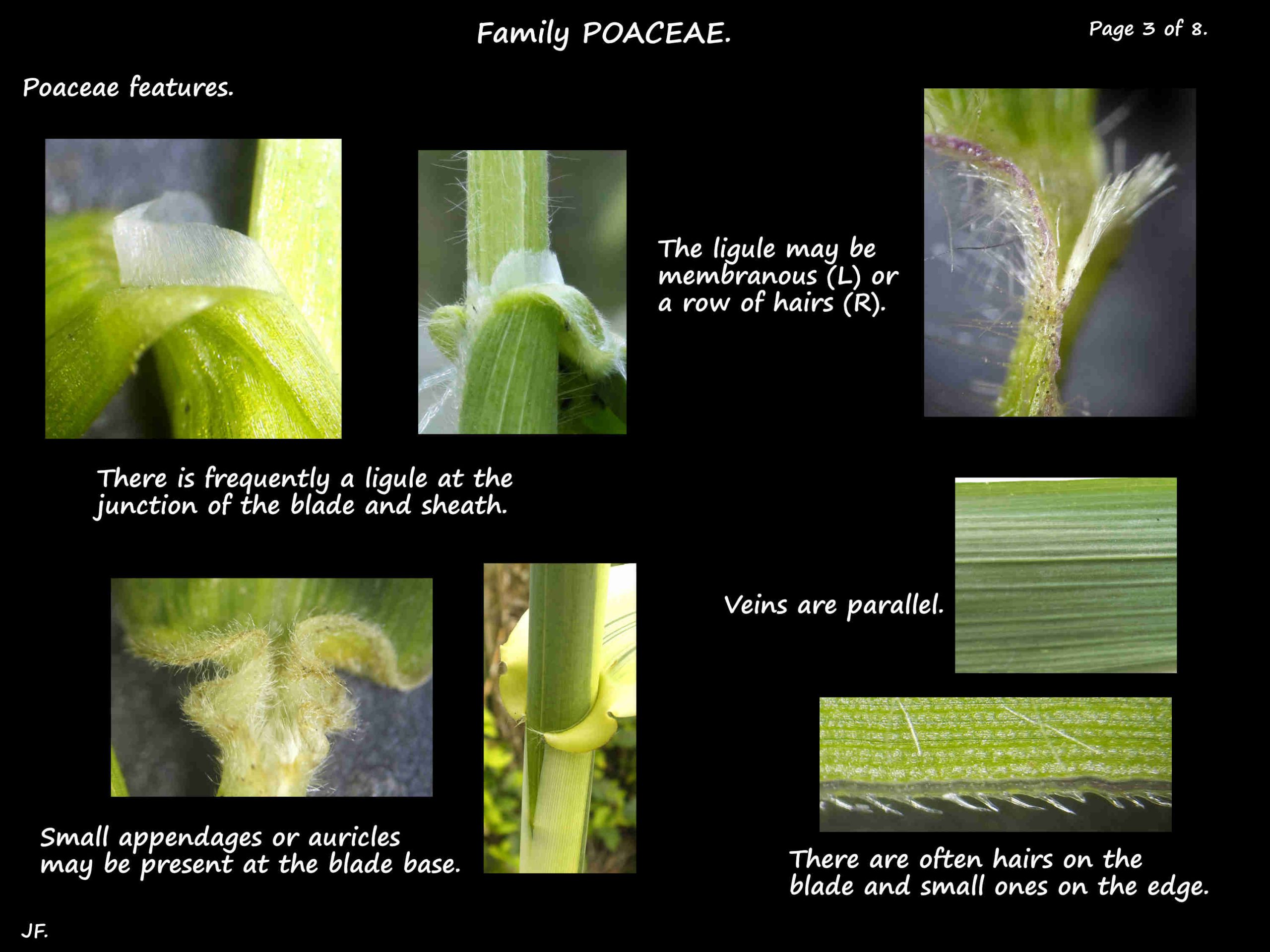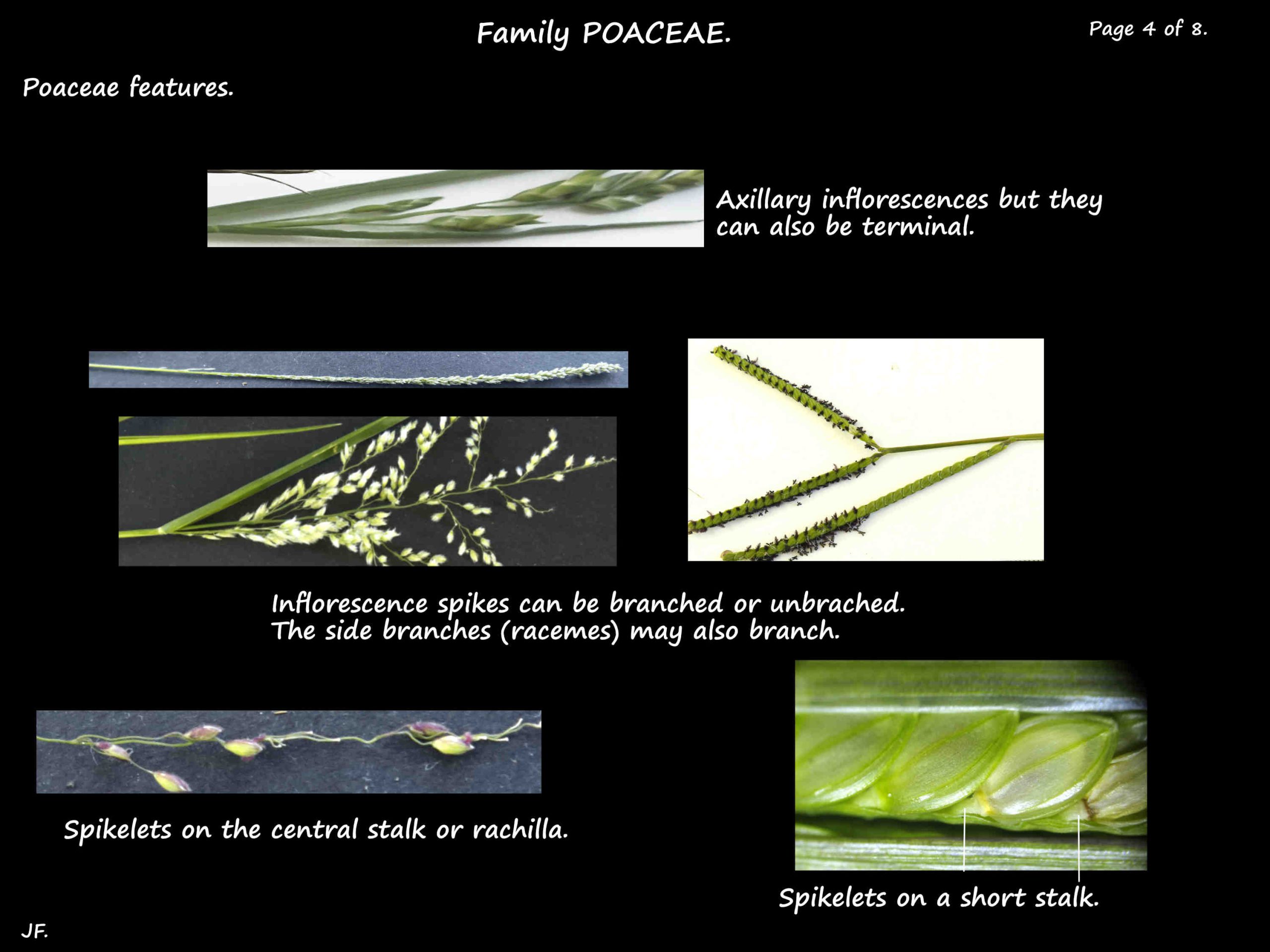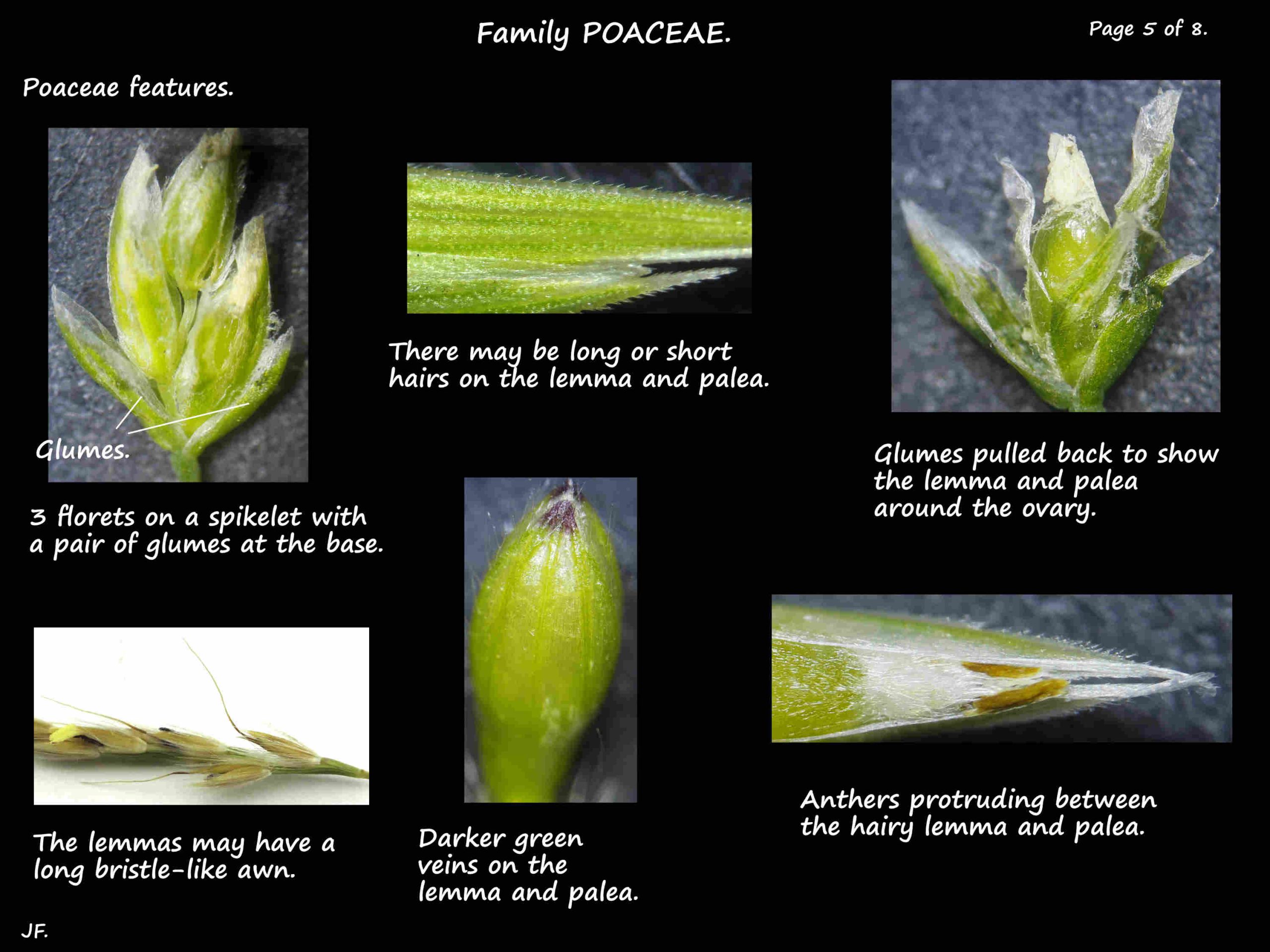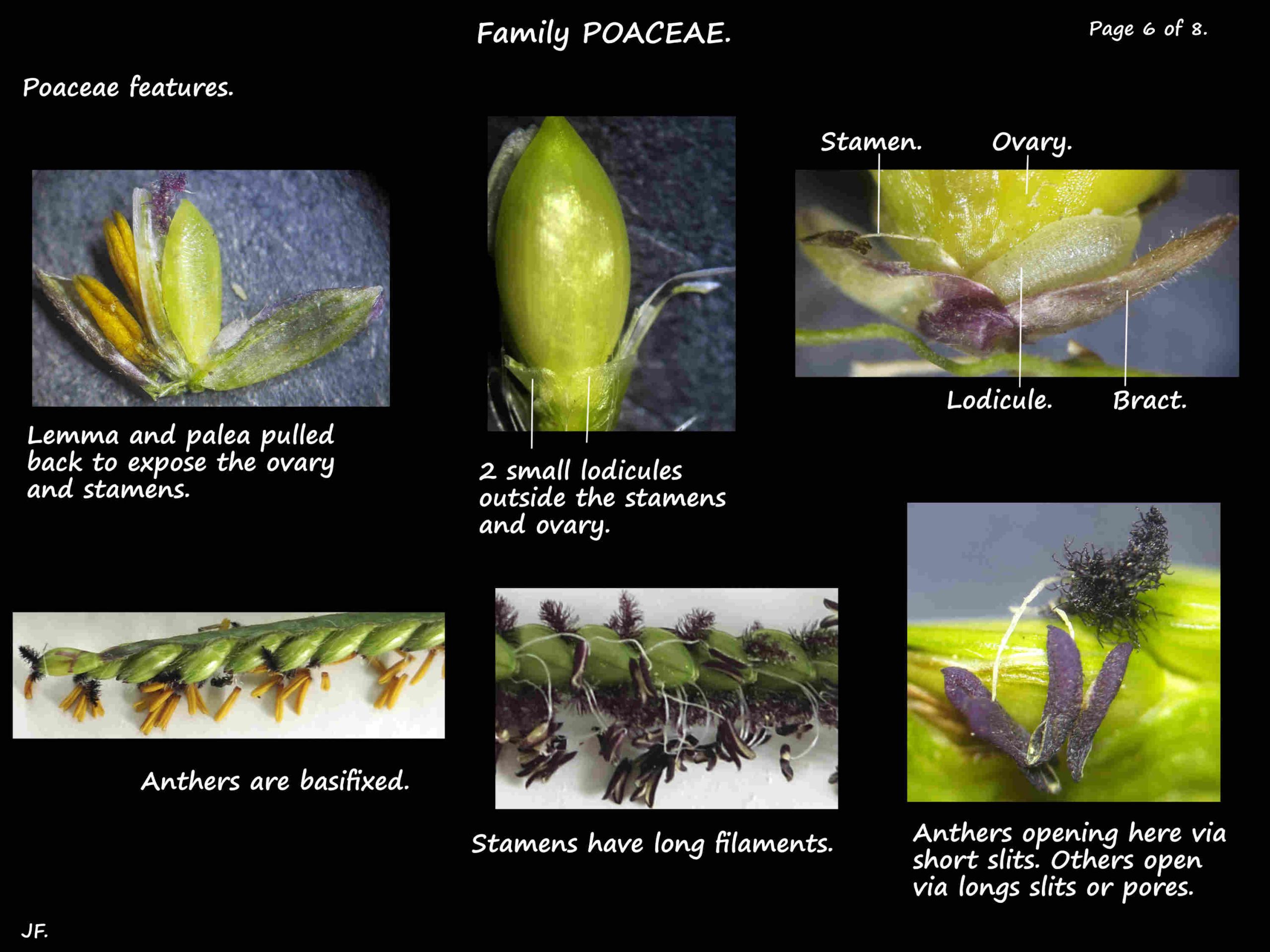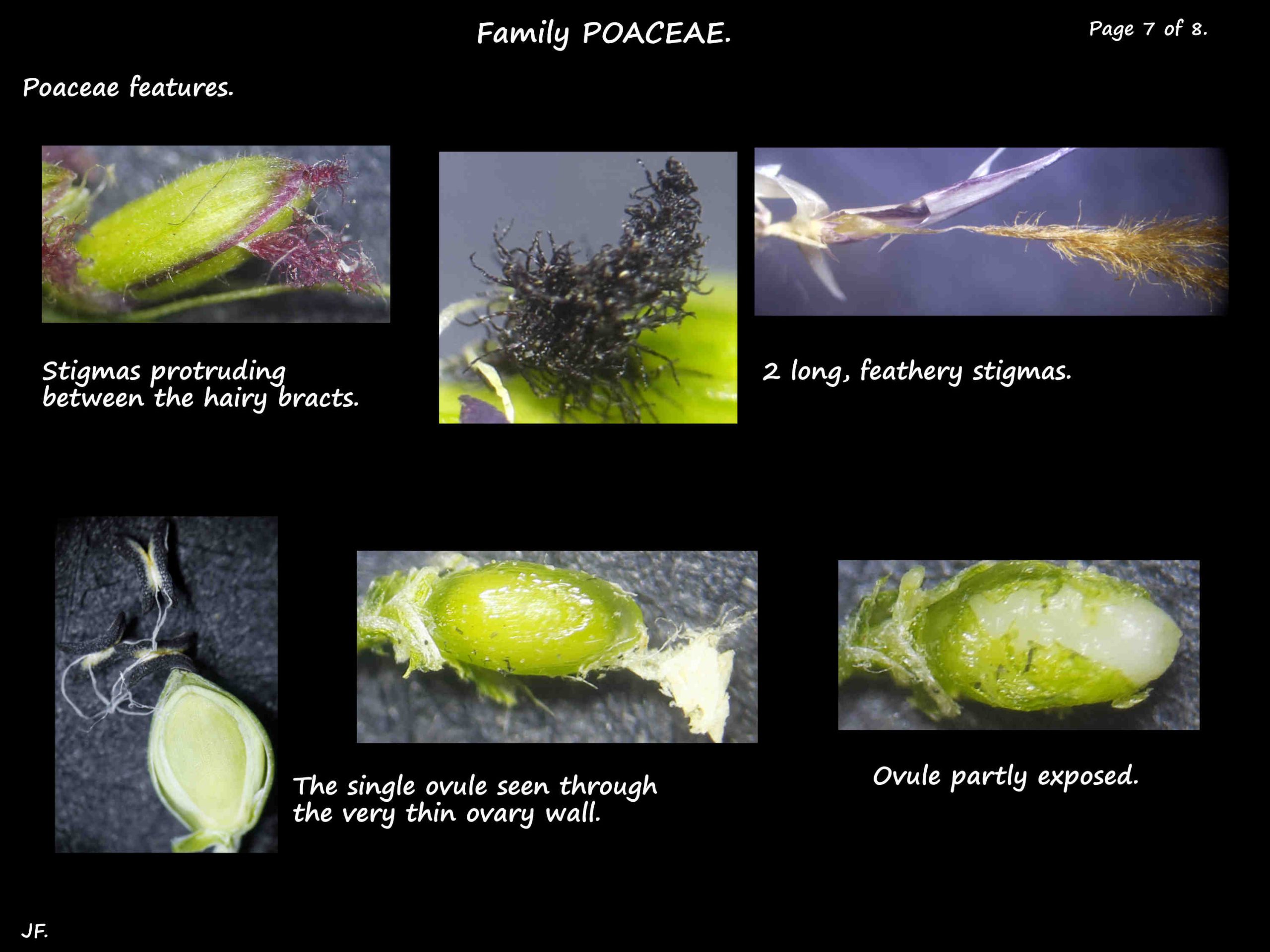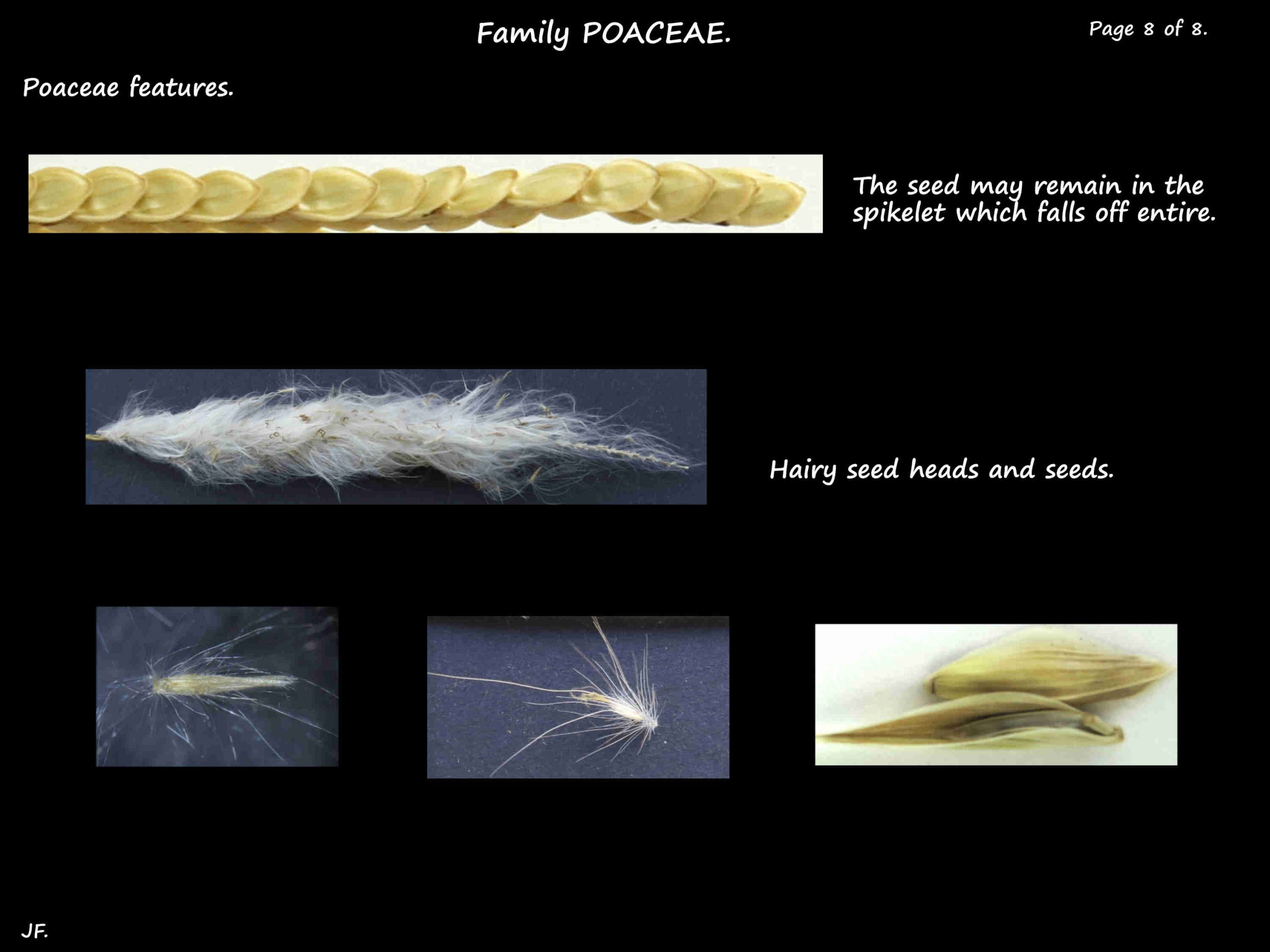Family Poaceae.
Also known as Gramineae there are around 700 genera and 10,000 to 12,000 species.
Australia has around 1400 species in about 225 genera.
Classified into 12 subfamilies they have many important uses:
• cereal grasses e.g. rice, maize and wheat,
• livestock feed,
• building materials e.g. bamboo,
• as lawns or ornamentals and
• biofuels.
(Bamboo has a number of differences, not noted, from the description below.)
Plants are mostly annual or perennial herbs.
They grow from rhizomes (underground stems) and occasionally tubers.
In perennial grasses the crown, from which adventitious roots grow, persists.
Clumps are formed when new plants grow from the crown, the creeping above ground stolons or from nodes on the underground rhizome.
The stems or culms are mostly round but occasionally flat.
Between the nodes they are hollow or nearly so with a loose open pith.
The alternate leaves are commonly in 2 rows (distichous).
They may have a petiole or be sessile.
Each leaf consists of a blade and a sheath which runs down the stem.
The sheath is almost always open and may have hairs on the margins.
At the junction of blade and sheath there is usually a ligule.
This can be a small membranous flap or a row of long or short hairs.
There are sometimes small appendages from the sides of the base called auricles.
Most blades are linear and they have parallel veins.
The edges can be flat or rolled up or down.
There are almost always simple hairs or bristles.
Some have sharp silica crystals that can cause cuts if the leaves are rubbed.
Leaves grow from the base of the blade so if eaten or damaged they continue to grow.
The terminal or axillary inflorescences are called spikes although strictly they are not.
They can be a single spike but are commonly variously branched.
The side branches or racemes may be in 1 plane giving a flat inflorescence or all around the stem.
Racemes hold up to 50 spikelets that are often in rows and all on one side of the central stem or rachilla.
Each spikelet has 2 (1 – 3) empty bracts or glumes at the base and 2 florets (flowers).
A floret consists of the flower and 2 bracts – the lemma and palea.
The lemma, the larger, lower or outer bract, partially encloses the inner palea.
It has green veins and may have a long bristle-like tip or awn.
The upper or inner and slightly smaller bract, the palea also has veins.
Initially green the bracts become dry and papery as the fruit develop.
Between the bracts and the flower parts are 2 or 3 small scales called lodicules.
These are more often on the same side as the lemma.
When the flower is mature they swell and force the lemma and palea apart exposing the stamens and stigmas.
They are usually interpreted as the sepals.
The flowers have no petals.
Flowers are mostly bisexual with some unisexual or sterile.
When sterile there may be no palea.
The 3 (1 – many) stamens have long filaments.
The basifixed anthers open via pores or long or short slits.
The superior ovary of 2 or 3 carpels has 1 locule.
The single ovule has basal to parietal placentation.
The usually single style has 2 (1 – 3) large, feathery stigmas.
The fruit is a caryopsis where the seed coat is fused to the fruit.
A few species have a berry or nut.
Grass idnetification.
The Flora of Australia series is dealing with the around 1350 species of grasses in at least 3 large volumes. The first two between them have almost 1000 pages.
Identification depends on features such as:
• are male and female spikelets on the same or different inflorescences and, if on
the same are they in different parts of it,
• spikelets solitary or in pairs or threes,
• glumes membranous or hardened (hyaline),
• 1, 2 or 3 glumes,
• stem internodes cylindrical or grooved,
• spikes on 1 or both sides of the rachis or all around it,
• number of nerves on the palea and lemma,
• hairs present or absent on various parts,
• sterile flowers present or absent,
• spikelets on stalks or not,
• number of spikelets in each raceme and their length and arrangement,
• with or without stolons,
• lemmas with awns (and their number) or not,
• lemmas membranous or hyaline,
• do the spikelets branch,
• number of fertile and sterile florets on a spikelet
• etc.
This is not a job for the faint hearted.
J.F.
